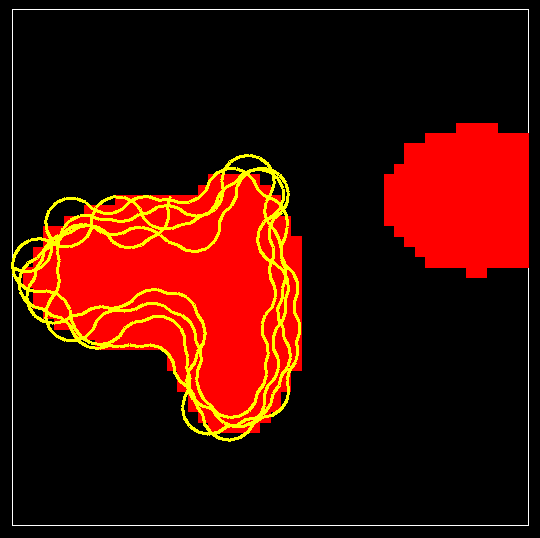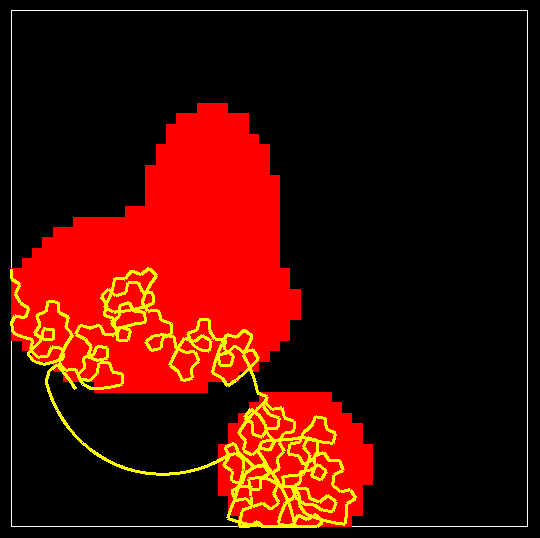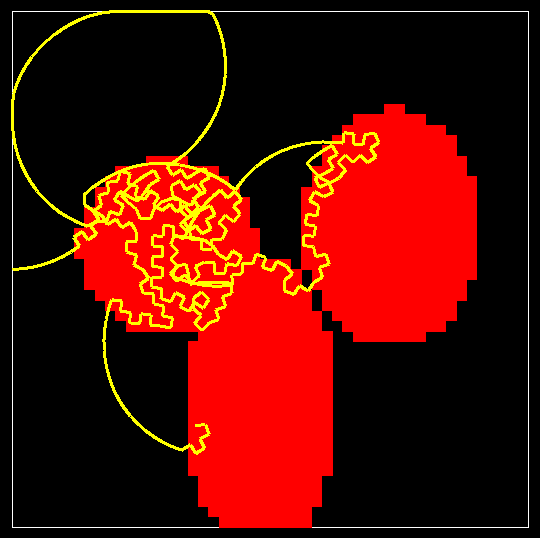| Figure 1. These two control structures can be "mated" using "chromosomal crossover" as shown in Figure 2 and Figure 3. |
 |
| Figure 2. The modules of the control structures shown in Figure 1 are arranged sequentially in arbitrary order; this order is part of the genome however and is kept from generation to generation. Chromosomal crossover is simulated by combining these arrays. In this case, the genome is read by starting at the beginning of the chromosome of the first organism. After the yellow module, the reading frame is shifted to the other chromosome by a pseudorandom trigger. The resulting chromosome is shown in Figure 3. |
 |
| Figure 3. The result of the crossover operation shown in Figure 2. The origins of the communication links ("axons") are kept in place, regardless of any new context. |
 |
| Figure 6. Mean fitness (yellow curve) in a run using pure neural networks with only sensors and artificial neurons. Note the punctuation around generation 370, which is linked to the change from edge following to a meandering strategy (Figure 10). The purple curve shows the number of organisms with food sensors, in percent. |
 |
| Figure 7. Another run using the same parameters as in the run shown in Figure 6, but with another starting point for the pseudorandom number generator. The result is similar, but the punctuation occurred much earlier, demonstrating the instability of the simulations. |
 |
| Figure 10 A-C. Sample trails from generation 320, 390 and 770 in the simulation shown in Figure 6. Note the edge following strategy (but with frequent crossings) before the punctuation around generation 370, replaced by small meandering which is perfected from generation 390 to generation 770. |
| Figure 10A. |
 |
| Figure 10B. |
 |
| Figure 10C. |
 |





